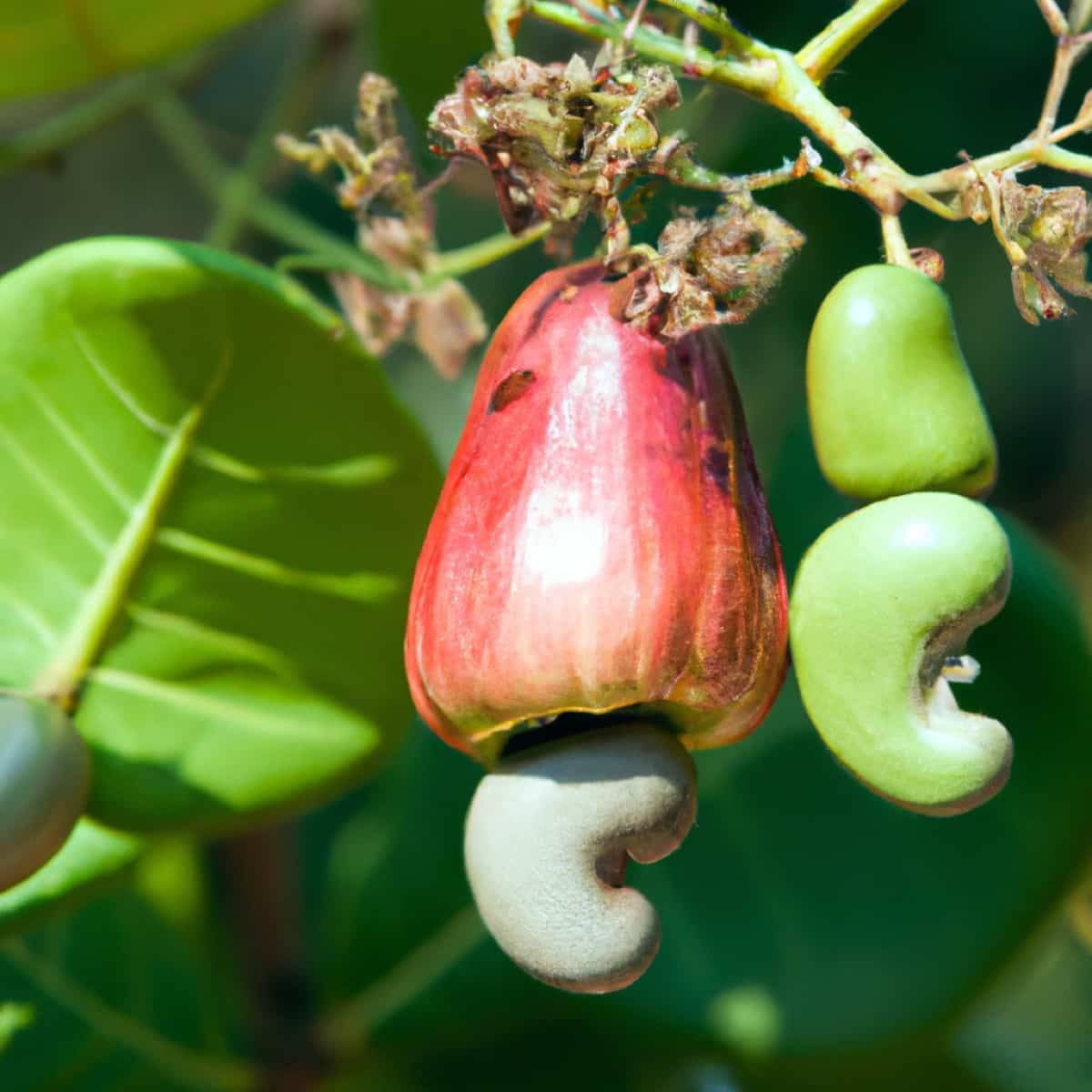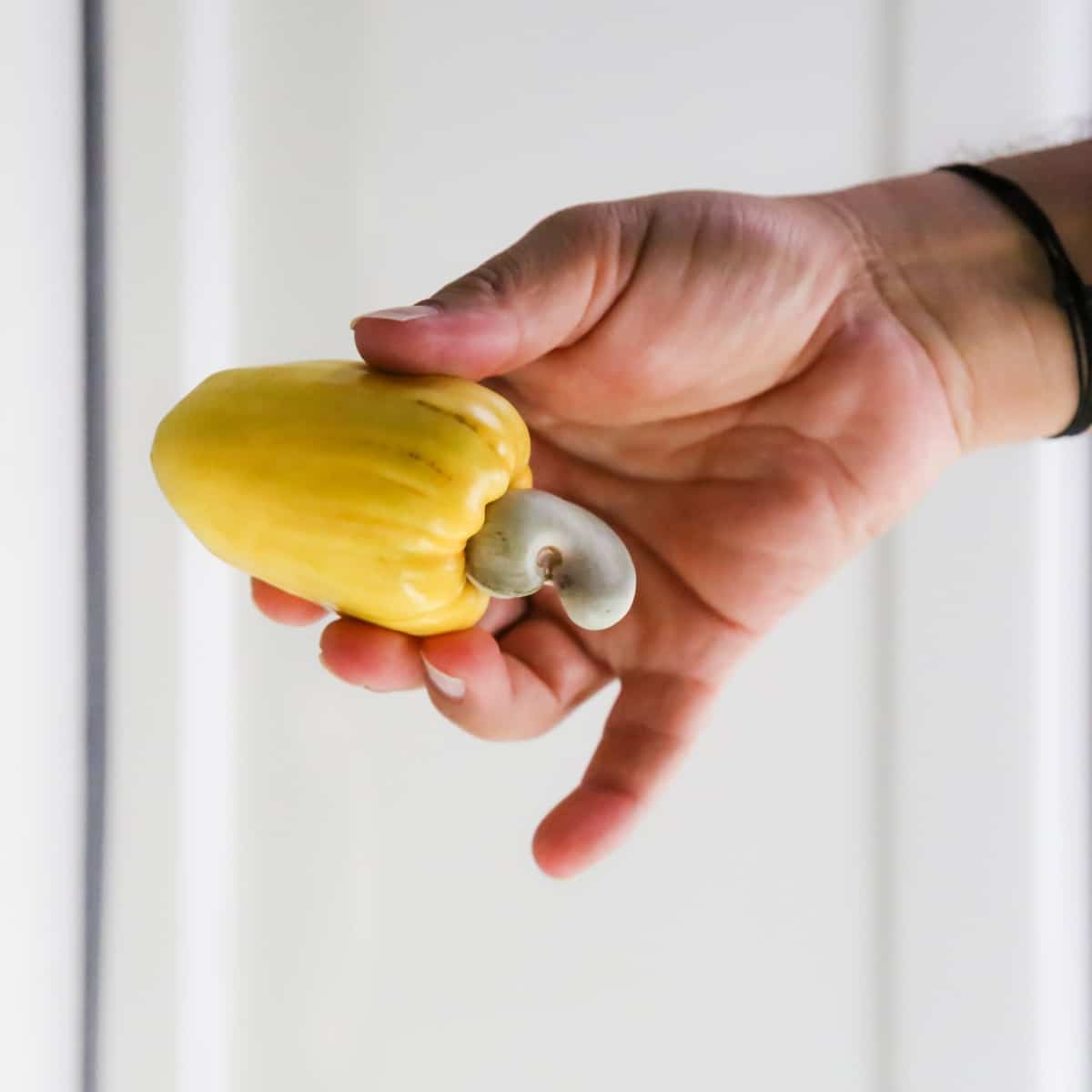The cashew tree is an important crop for many parts of the world, providing food, income, and environmental benefits. Unfortunately, it can be vulnerable to various causes of death, including pests, diseases, and environmental factors.

9 Causes of Dying Cashew Trees
Why is My Cashew Tree Dying in Summer Heat, and How Can I Save It?
When a cashew tree is exposed to high temperatures, the plant’s leaves will begin to yellow and wilt. The leaves will then drop off, leaving the tree without its primary energy source. This, in turn, can cause the tree to die. Additionally, heat can cause the tree’s fruits to drop prematurely, leading to a loss of yield.
Providing adequate water and nutrients is important to prevent the summer heat from killing cashew trees. Watering during the hottest day can keep the tree cool and reduce stress. Mulching around the tree’s base can also help retain moisture and cool the soil. Providing shade and pruning can also help the tree to cope with the heat. In some cases, cashew trees may need to be moved to a cooler area if the summer heat is particularly severe. Choosing a more suitable location can help reduce the tree’s heat-related damage.
Preventing Cashew Tree Death From Fungal Infections: Effective Remedies and Prevention Tips
Fungal infections are among the most common and dangerous diseases affecting cashew trees. Different types of fungi can cause various symptoms, including leaf spot, stem canker, fruit rot, and root rot. These infections can cause significant damage to the tree, reducing its yield and ultimately leading to death. Take preventative measures to reduce infection to control fungal infections in cashew trees.
This includes choosing a suitable site for planting, with good air circulation and adequate drainage, and avoiding overcrowding of plants. Additionally, providing adequate nutrition, water, and sunlight to the tree is important. Pruning is also recommended, as it helps to reduce overcrowding and promote better air circulation. If the tree is already infected, fungicides can reduce the severity of the infection. However, fungicides may not be effective in all cases, and it is better to consult a professional for the next action.
Identifying Nutrient Deficiencies in Cashew Trees and Remedies to Revive Them
Nutrient deficiencies in cashew trees can lead to poor growth, decreased yields, and an overall decrease in the tree’s health. Different nutrition deficiencies can manifest in different ways, and the signs will vary depending on the exact nutrient deficiency. Common nutrient deficiencies in cashew trees include nitrogen, potassium, phosphorus, zinc, magnesium, and iron.
To prevent deficiencies in cashew trees, farmers should practice good soil management, such as maintaining a healthy soil pH and using organic matter to improve soil fertility. They should also use fertilizers that are specifically designed for cashew trees, and they should apply fertilizers at the right time. By following these steps, farmers can help their cashew trees reach their full potential.
How to Protect Cashew Trees From Pests and Diseases to Prevent Decline and Death
Cashew trees are prone to various pests and diseases, and it is important to take steps to protect them. Common pests of cashew trees include mealybugs, which feed on foliage and sap, and pear slugs, which damage the leaves. Plant hoppers, whiteflies, and aphids may also attack and can be controlled with insecticides.
Common diseases include anthracnose, caused by a fungus, which affects the twigs and leaves, and stem canker, which can kill the tree. To protect cashew trees from pests and diseases, keep the area around the tree’s base free of debris, as this can attract pests. Pruning should be done regularly, and trees should be watered with a hose on the soil, not the leaves, to prevent disease.
Fertilizers should be used according to the tree’s needs and be inspected regularly for any signs of disease or pest problems. If any pests or diseases are spotted, it is important to address them quickly. Pesticides and fungicides can control pests and diseases, but use them responsibly to avoid harming beneficial insects and other animals.
In case you missed it: How to Start a Cashew-Nut Processing Business: A Profitable Agriculture Idea

Overwatering Issues in Cashew Trees: Signs, Symptoms, and Steps to Rescue a Dying Tree
It is true that overwatering can kill cashew trees. Too much water can cause the tree’s roots to rot, leading to root death and eventual tree death. To revive a dying cashew tree, it is important to reduce the water given to it and give it a dose of the proper nutrients and fertilizer. The roots need to be checked for signs of rot or disease; if found, the infected area should be removed.
Once the tree is stabilized, it should be given less water and more nutrients. Additionally, the soil should be corrected with organic matter to help with drainage and aeration. Lastly, the tree should be pruned and shaped to promote healthy growth. With the proper care and attention, a dying cashew tree can be brought back to health.
Underwatering Issues in Cashew Trees: Signs, Symptoms, and Steps to Rescue a Dying Tree
Underwatering can be a death sentence for cashew trees, but it can be revived with proper care and attention. By monitoring the soil for moisture, providing adequate water and sunlight, and fertilizing regularly, a cashew tree can be brought back from the brink of death. If the tree is severely wilted or yellow, it can be revived by pruning off the affected branches. This will reduce the water the tree needs and allow it to focus on producing new growth. And also fertilize the tree to help it recover from the underwatering.
Cashew Tree Winter Damage/dying: Protecting Trees From Frost and Cold Temperatures
Winter temperatures can be tough on cashew trees, especially if the cold is prolonged or temperatures drop below freezing. If your cashew tree has been exposed to cold temperatures, it may appear dead, but you can revive it with a little time and effort. The first step is to give the tree a good watering. This encourages the tree to draw moisture from the soil and can help to revive it. If the ground is in a frozen state, wait until it thaws before watering. After this, you can use a mulch to provide further insulation and help keep the ground from freezing.
Improper Pruning May Cause Cashew Tree Death: Pruning Methods for Healthy Growth
Improper pruning can cause the tree to become unbalanced and top-heavy. This can cause the tree to become unsteady and prone to toppling over and breaking off branches. Also, improper pruning can cause the tree to become overcrowded and unable to receive the necessary light and air circulation. This can lead to the tree becoming weakened and eventually dying. Trim the tree properly to revive a cashew tree killed by improper pruning.
Remove all dead and diseased branches, and the tree should be pruned for even growth and balance. This will help the tree to become more stable and provide the necessary air circulation and light. The second step to reviving a cashew tree is ensuring the root system is not damaged or overgrown. The roots should be trimmed carefully, and any diseased or damaged roots should be removed. Additionally, the tree should be planted in an area that provides the necessary nutrients and water.
Reviving a Stressed Cashew Tree: Rehabilitation Methods for Overall Recovery
Cashew trees are hardy and resilient plants, but they can even become stressed and need rehabilitation occasionally. Fortunately, a few effective methods exist to help revive a cashew tree that is under stress. The first step to reviving a stressed cashew tree is to identify the source of stress. Common causes of stress in cashew trees include pest infestations, nutrient deficiency, waterlogging, soil compaction, and excessive pruning.
Once the source that causes stress has been identified, it can be addressed, and the tree can be rehabilitated. For pest infestations, the best approach is to apply insecticidal soap or neem oil directly to the affected areas. This will kill the pests and help the tree recover. Add the deficient nutrients to the soil as a fertilizer for nutrient deficiencies. Additionally, adding compost or mulch to the soil can help the tree access its nutrients.
In case you missed it: How to Grow and Care for Java Plum/Jamun: A Step-By-Step Comprehensive Guide for Beginners

Conclusion
To prevent cashew tree death, it is important to take preventive measures such as pest control, disease-resistant varieties, proper pruning, and adequate watering and shade. These steps can reduce the incidence of cashew tree death and maintain a healthy crop.
- Feed Your Flock for Less: Top 10 Tips to Save on Chicken Feed
- Ultimate Guide to Ossabaw Island Hog: Breeding, Raising, Diet, and Care
- Hatching Answers: The Top 10 Reasons Your Chickens Aren’t Laying Eggs
- Eggs and Economics: Breaking Down the Cost of Raising Backyard Chickens
- Defend Your Greens: Proven Methods to Keep Iguanas Out of Your Garden
- Ultimate Guide to Cinnamon Queen Chicken: A Comprehensive Guide for Beginners
- Ultimate Guide to California Tan Chicken: Breeding, Raising, Diet, Egg-Production and Care
- Ultimate Guide to Marsh Daisy Chicken: Breeding, Raising, Diet, and Care
- 10 Types of Chicken Farming Businesses You Can Start for Profits